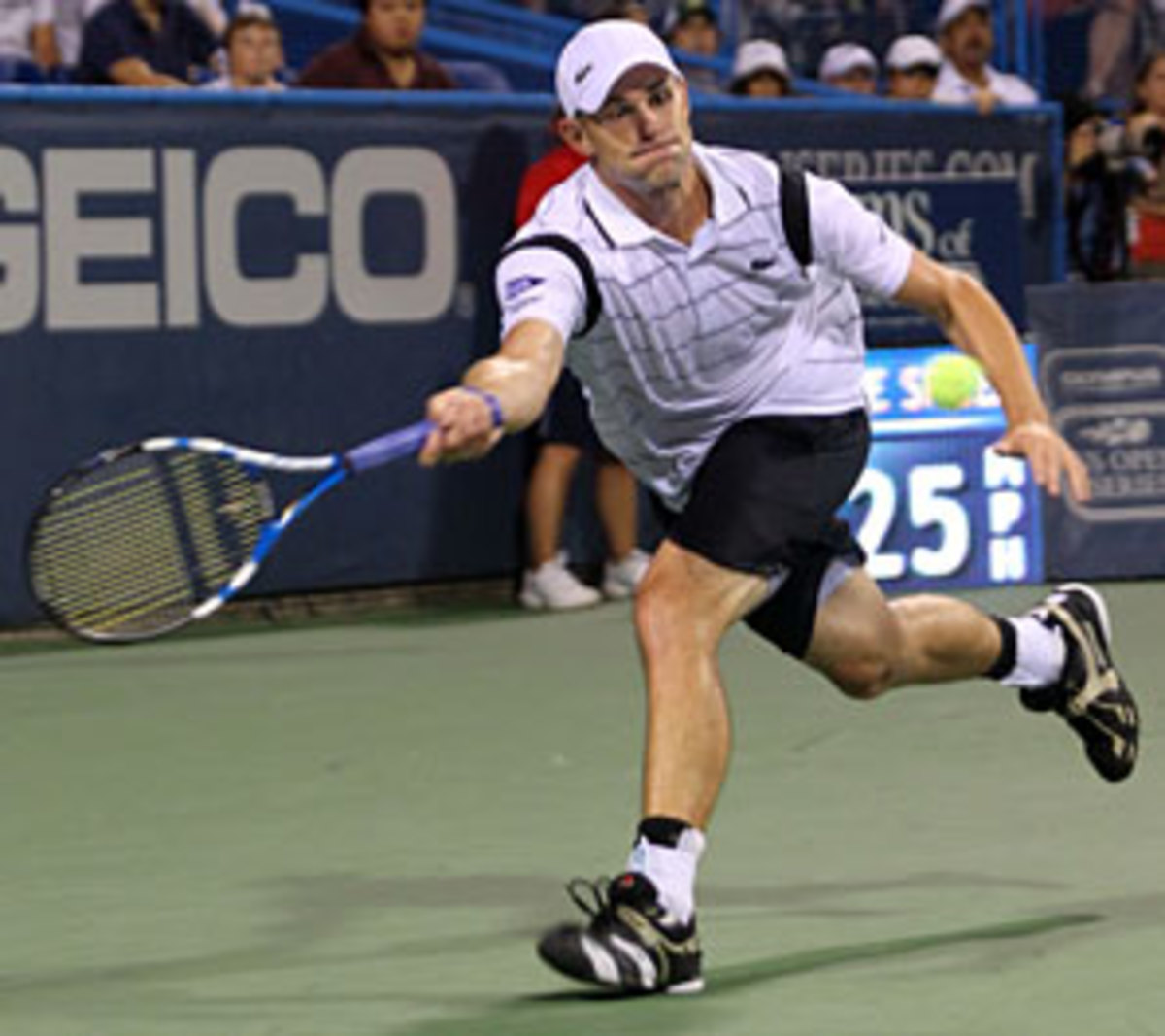When Roddick retires, American tennis will face star problem
As last week's Legg Mason tournament in Washington D.C. staggered to a connoisseurs-only conclusion, we heard a familiar lament: Where are the Americans, with all that hard-court talent? To me, this was the more pressing question: If Andy Roddick is about to vacate his post as the No. 1 U.S. player, where will we find the panache?
I've never watched a Grand Slam event with even a single thought about Americans -- who's doing well, who's been eliminated, any of that. If they're all gone within two days, no problem, as long as compelling characters remain. If the world's Top 5 fit the molds of Rafael Nadal, John Newcombe, Patrick Rafter, Yannick Noah and Boris Becker for the rest of time, I wouldn't care if an American ever crashed the party.
It helps the sport, though, if David Letterman, Time Magazine or Rolling Stone can reach out to the top American player for an interview, any old time. Roddick definitely fits that bill. He was a bit of a smart-ass in his earlier days, quick to belittle anyone who dared question his ability and not always kind to opposing players. With maturity came some perspective, and a more measured sense of humor, but he remains a terrific interview. Michael Wilbon and Tony Kornheiser took advantage of Roddick's D.C. visit to get him on ESPN's Pardon The Interruption last week, and he was everything they desired: bright, witty, charming.
Consider the barren landscape when Roddick retires, or slips so far down the rankings that he loses his competitive edge. Who's next in line for a high-profile interview? Sam Querrey? John Isner? Mardy Fish? These are some decent guys, but does their appeal transcend the sport of tennis? Hardly.
In lamenting Roddick's early exit from the D.C. tournament, Washington Post columnist Mike Wise noted Roddick's "very gracious interview, given the circumstances." But Wise went on to write, "Isner, when asked about the longest match in the history of tennis he played at Wimbledon less than two months ago, was less expansive and more monosyllabic than Patrick Swayze in Road House. Excuse me. You play tennis for 11 hours over three days in your sport's cathedral ... and you're ready to stop talking about how you made history? Memo to Isner: Being shaggy, 6-foot-9 and unable to move well laterally does not qualify as intriguing."
Wise is not a year-round tennis follower, but that's just the point. To interest a national columnist, network talk-show host or splashy magazine, you need to offer something more than an inside-out forehand. (Roddick, by the way, doesn't need the presence of his supermodel wife, Brooklyn Decker, to qualify as a player in this league. It helps, but he has always done quite well on his own.)
I'm just wondering what happens to American tennis, from a marquee standpoint, when Roddick departs. Isner just doesn't have the desire, or the personality, to get on that stage. Querrey can be astonishingly dull, and half the time, he's talking about wanting to get off the court and go home (that happened again in L.A., before he handsomely recovered to beat Andy Murray in the final).
It's clear that American men's tennis has been in severe drought since the winter of 2003-04, right after Roddick won the U.S. Open. Once Pete Sampras and Andre Agassi retired, the U.S. was left without at least two dominant, internationally successful men since Bill Tilden popularized the game in the 1920s.
It's not just the talent that has gone missing, though. It's the presence of a strong, undeniably radiant personality. That covers a lot of ground, from class to crass, and controversy most certainly counts. The tennis boom of the 1970s wouldn't have carried nearly as much steam if Jimmy Connors and John McEnroe weren't torching the bastions of tradition like a couple of rebellious punks.
It goes all the way back, again, to Tilden, whose singular elegance put tennis in the company of Babe Ruth, Red Grange, Jack Dempsey and other sporting heroes of the Roaring Twenties. From there it progressed through the stylish Ellsworth Vines, the innovative Don Budge, the hustling Bobby Riggs, the commanding Jack Kramer and the fiery Pancho Gonzalez, among others, before giving way to Connors, McEnroe and Arthur Ashe. Nobody ever called Pete Sampras the life of the party, but he had Agassi as his foil, and a rivalry for the ages.
Put it this way, any time tennis staged a high-class social gathering -- think London, Zurich or Monte Carlo -- top American players have turned heads. Perhaps they triggered thoughts of utter disdain ("Oh my God, I despise that guy"), but they got people's attention. I doubt if Isner or Querrey could even dress for such an occasion, let alone bring any kind of star power.
Is it their fault? Of course not. Credit those two for cracking the world's Top 20 and aiming for the top. Beware the residue, though, when Roddick descends from relevance. Beyond the baseline, American tennis will be duller than a knit-off.






